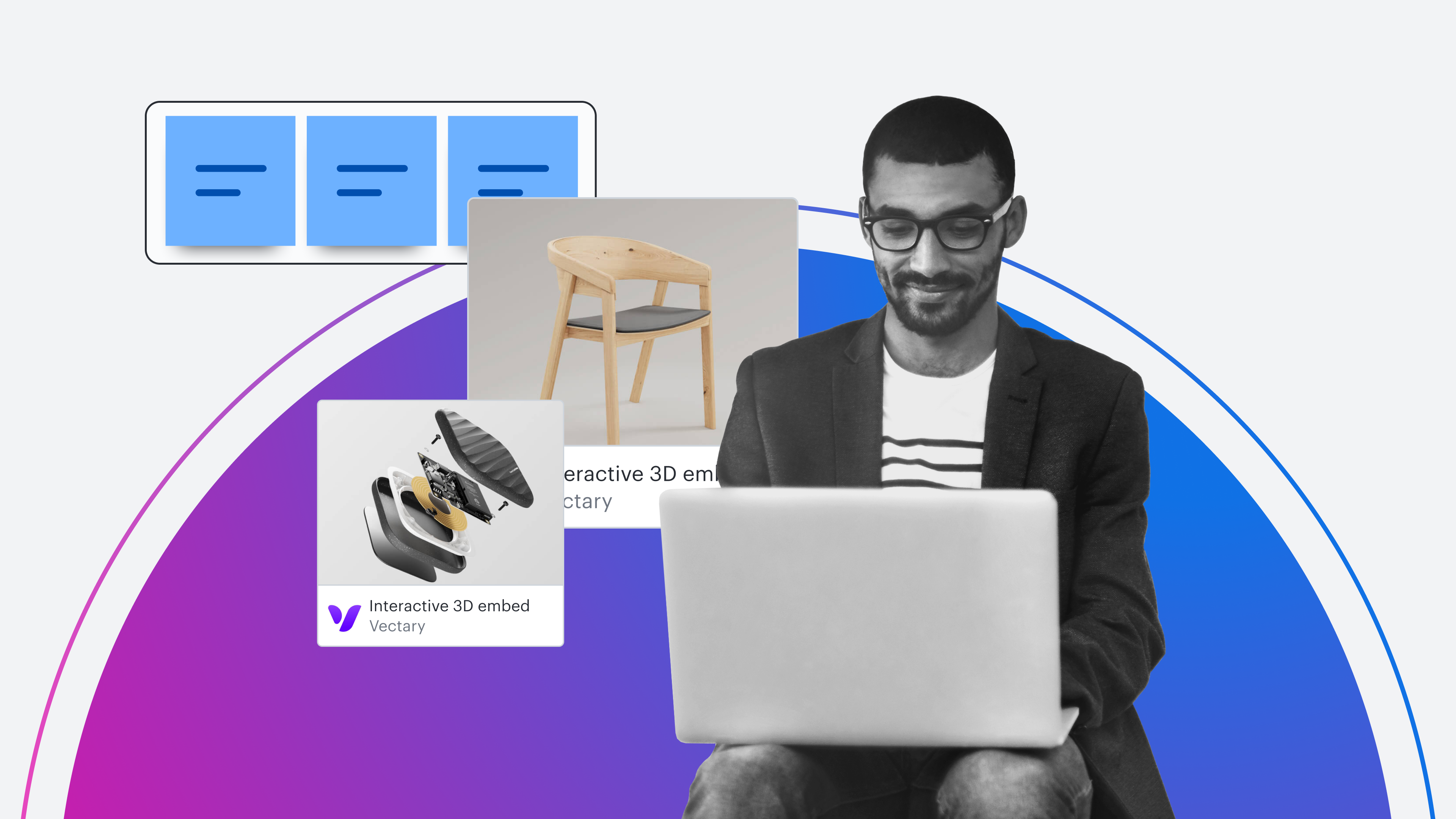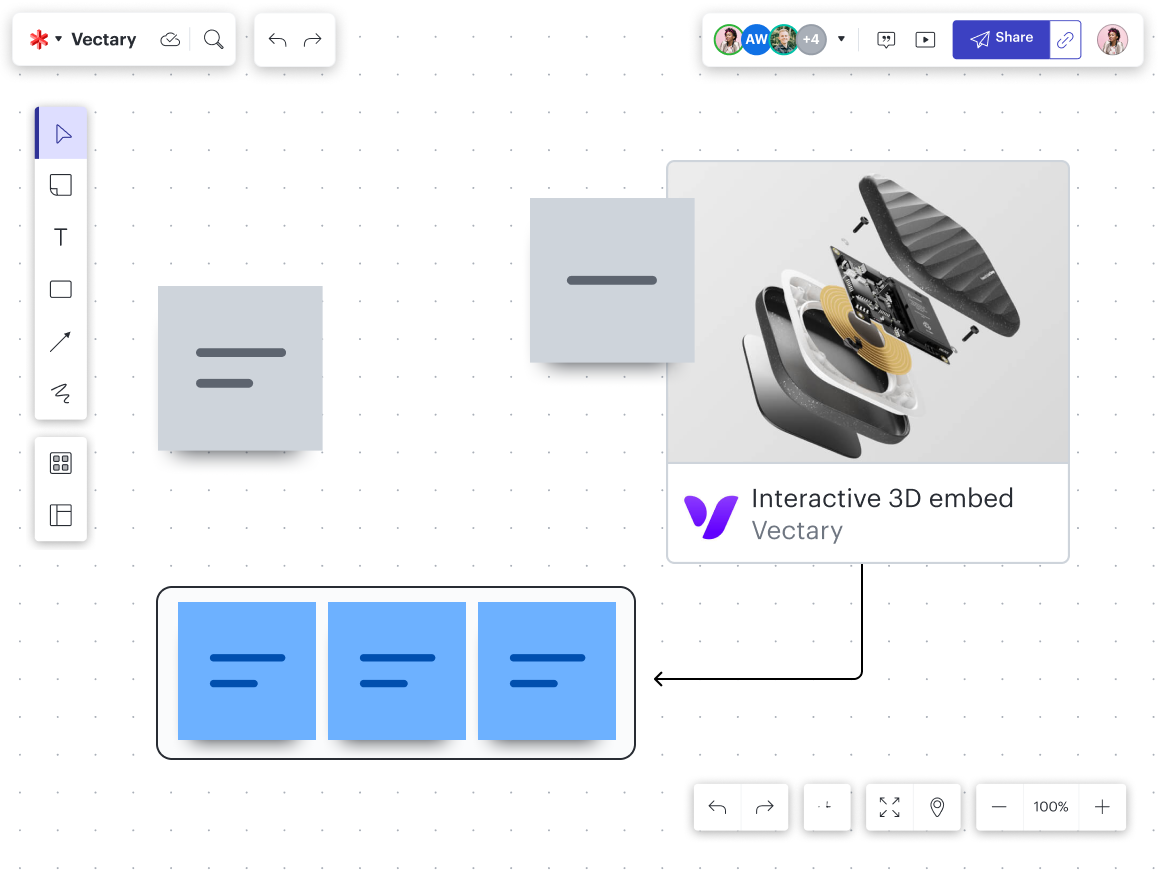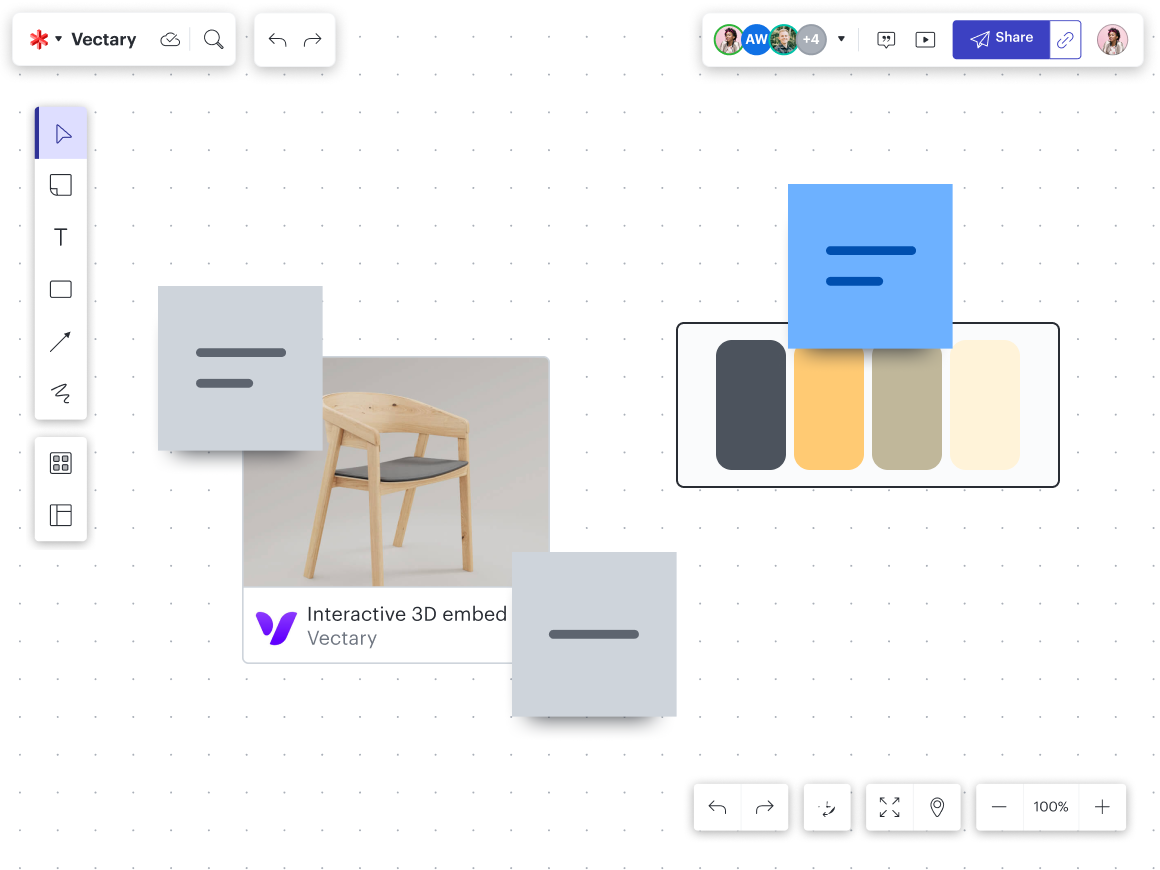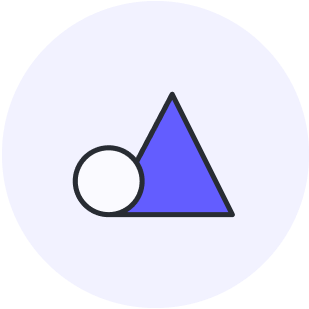
Bring new value to visual collaboration with 3D viewers
Mirka Biel
Reading time: about 2 min
We know that 3D design offers a more immersive and interactive experience than traditional 2D methods. 3D models can be rotated, zoomed in on, and interacted with in real time. With the Vectary platform, for example, there is a wide variety of interactive menus and animations that can be set up and even an option to view in AR.
3D models can be used to create realistic prototypes and simulations, serving as digital twins not only for presentation but for the functionality of identifying potential issues early on in the design process. It is not a surprise that embedding a complete 3D viewer into online productivity tools is the new way companies will work, collaborate, connect between departments, and keep projects from slowing down.
3D viewers directly enhance collaboration
Embedded 3D viewers take advantage of all the possibilities interactive 3D design provides and apply them to the collaboration process. They allow team members to view and interact with 3D models in real time, regardless of their location. In addition, making revisions should be just as fast. With the Vectary platform, any changes to the original file automatically sync with the embedded viewers already shared.
Large file downloads are a function of the past. One link sharing and embedding to one productivity hub, instead of switching between multiple platforms, is becoming the norm for any online collaboration process.

Using embedded 3D viewers for visual collaboration
Visual collaboration solutions like Lucid are effective for bringing together teams of all sizes to bring their best ideas to life. However, it can be challenging to convey complex 3D concepts in a 2D space. This is where embedded 3D viewers come in.
Embedded 3D viewers can be integrated into digital whiteboards easily, adding instant depth and detail to the board. Team members can collaborate on a shared, infinite canvas while also viewing and interacting with 3D models in real time. It is not only an effective way to concept and brainstorm but also to present complex concepts without the hassle of uploading numerous images or text descriptions. It brings new, streamlined processes and accessibility to collaboration regardless of team size, device usage, or team location.

The future of collaboration with embedded 3D viewers
As remote work becomes more prevalent, embedding a 3D viewer in visual collaboration applications is likely to become a standard part of collaborating. It offers an easy way to bridge the gap between physical and virtual workspaces. By taking advantage of the immersive and interactive nature of 3D design and complete 3D platforms like Vectary, team members can collaborate more efficiently and effectively, ultimately leading to better outcomes.

Ready to embed 3D viewers into Lucidspark or Lucidchart?
Connect Lucid to VectaryAbout the author

Mirka is a marketing ideamaker with a passion for creativity and digital products.
About Lucid
Lucid Software is the leader in visual collaboration and work acceleration, helping teams see and build the future by turning ideas into reality. Its products include the Lucid Visual Collaboration Suite (Lucidchart and Lucidspark) and airfocus. The Lucid Visual Collaboration Suite, combined with powerful accelerators for business agility, cloud, and process transformation, empowers organizations to streamline work, foster alignment, and drive business transformation at scale. airfocus, an AI-powered product management and roadmapping platform, extends these capabilities by helping teams prioritize work, define product strategy, and align execution with business goals. The most used work acceleration platform by the Fortune 500, Lucid's solutions are trusted by more than 100 million users across enterprises worldwide, including Google, GE, and NBC Universal. Lucid partners with leaders such as Google, Atlassian, and Microsoft, and has received numerous awards for its products, growth, and workplace culture.
